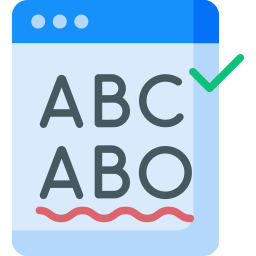Basic Guidelines
The following aims to provide guidelines for authors on how to compose their manuscript with regards to conventions of English. Please note that the copy editor is responsible for applying these guidelines in addition to checking the grammar and punctuation of each manuscript.
Why is good writing important?
Good writing is writing that clearly communicates your research. Scientists are busy people, so if your manuscript is poorly written and difficult to understand, they might not take the time to read it (or cite it later). Writing well helps others understand the work you’ve done and helps strengthen your own comprehension of your research.
High-quality writing has the following benefits:
- Increases the chances of acceptance for publication
- increases the impact of a manuscript within the research community
- accelerates understanding and acceptance of the research
- increases the faith of readers in the quality of the research
Poorly written manuscripts annoy journal editors, peer reviewers and readers, and hinder their understanding of complex scientific concepts.

Concise writing
You can keep your manuscript concise and precise by adhering to the following guidelines:
- Only one idea per sentence
- Use the active voice, not the passive voice, when possible
- Delete unnecessary or vague words and replace them with more specific words
- By presenting one idea per sentence, you can reduce the first long sentence (33 words) to two shorter and clearer sentences (12 and 16 words, respectively).

Subject and verb placement
Readers expect the verb, a word that describes an action, in a sentence to be near the subject of that sentence. However, some authors tend to insert a lot of text that describes the subject between the subject and verb.
In these cases, when the reader reaches the verb, they can forget what the subject was. They will then have to go back to the beginning of the sentence for clarification. Your reader should only have to read your writing once to understand your ideas. To improve the readability of your manuscript, keep subjects and verbs close together in your sentences.

Topic position
The topic position refers to the information provided at the beginning of a sentence. This information serves two functions for a reader. First, it should introduce to the reader what information will be presented in the sentence.
We mentioned previously that each sentence should discuss one idea—the topic position should introduce this idea. To make this new idea familiar to the reader, it needs to link back to previously discussed information. That is the second function of the topic position—to serve as a topic link.

Comparisons
Comparisons are frequently made in the Results section of papers. These often involve the words “between,” “among,” “like,” “with,” and “than.”
When making a comparison, the following points should be adhered to:
- Only compare similar things that can be compared fairly
- Avoid being vague – be as specific as possible
- Words such as “reduced,” “increased,” and “decreased” can only be used to compare something to the way it was before, not to compare two different things. To compare two different things (e.g., groups of patients), use words such as “higher,” “shorter,” or “more”

Proper nouns
A noun is a word that refers to a person, thing, or idea. A proper noun is the specific name of a person, organization, or location. Proper nouns always have their first letter capitalized.
It’s important to know which nouns are proper and which are common in order to determine whether a noun should be capitalized. All nouns should be capitalized when they’re the first word in a sentence. But if it’s the second word or after, it should only be capitalized if it’s considered proper. A noun is considered proper if it’s used to name an individual person, place, or organization. For example, the words “dog”, “house”, and “limo” are all common because they don’t name a specific person, place, or organization. On the other hand, “Barack Obama”, “Antarctica”, and “Microsoft” are all proper because they all name an individual person, place, or organization.

Articles
There are three articles in English: a, an, and the. These are classified as indefinite (a and an) or definite (the).
Indefinite articles refer to something not specifically known to the person you are communicating with. In other words, a and an are used before nouns that introduce something or someone you have not mentioned before.
Use the when you know that the reader or listener knows or can identify what particular person or thing you are discussing.

Use of respectively
‘Respectively’ is an adverb that is often misused by non-native English speakers. It means “in the order given” and should only be used if your sentence would be unclear without it.
Respectively is an adverb that means "for each separately and in turn, and in the order mentioned." The correct use of respectively requires two parallel lists of corresponding items.
For example, these sentences are correct:
- The values of x and y are 3.5 and 18.2, respectively.
- The samples containing mouse serum, fly serum, and control solution were labeled M, D, and C, respectively.

Spelling
Should you use UK or US spelling? Check the journal’s Instructions for Authors to find out which spelling the journal requires. In many cases the journal will accept either form, just remember to be consistent with the spellings throughout your manuscript.
Correct spelling and grammar will help to student understand your instructions better, thus avoiding any confusion or misunderstanding about what is expected of them. The result will be less time wasted trying to work out poorly worded instructions and more time spent doing the job. This may also help to maintain harmonious working relationships between colleagues, as a result of better and clearer communication.

Punctuation
The colon “:” and semicolon “;” are two punctuation marks that are often misused.
A colon is used to introduce a list or a clause that explains the clause before the colon.
Semicolons are used in two ways:
- To separate two independent clauses (clauses that could be complete sentences by themselves) if you do not use a connecting word like "and" or "while" between them.
- To separate items in a list if some items in the list have commas within them. In other words, semicolons are used instead of commas if commas would be confusing.

Collocations
“Large” and “small” are generally used to express variations or changes in size, dimensions, or mass. “High” and “low” are usually used to express levels or numerical values. “Large” and “small” are often mistakenly used where “high” and “low” would be better.
The Oxford Collocations Dictionary suggests high/low for the 'speed/frequency' aspect of rate (the other aspect there is 'amount of money'). And also the adjectives are suggested: constant, expected, regular, steady, slow, fast, rapid, alarming, phenomenal, ever-increasing, rocketing, etc. In no aspect large or small are suggested (I guess those words are more typical for pure numbers of something).
